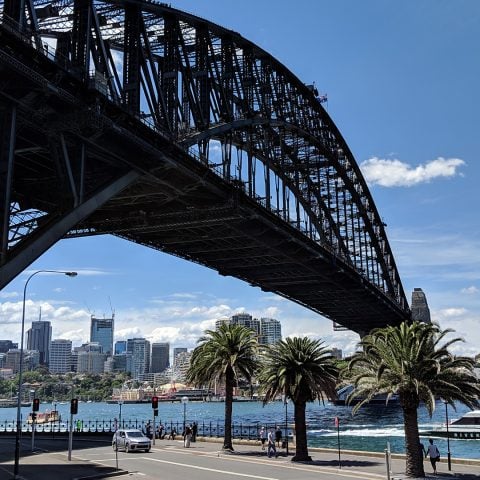My journey so far
Mapped on Google Earth
On my quest for all things travel and technology, I decided on this rainy Good Friday to take some time out and have a look at where I’ve been over the past 2 years. The result of this is the map above or you can view a bigger version with labels here.
While many people seem to have issues with the amount of data Google knows and keeps about you, I have no aversions to it as long as it results in improved and more relevant services to me. One such service is Google Location History which if you have an Android phone with the tracking option activated will keep a log of everywhere you (or more specifically your phone) has been over time. Data can only be accessed by logging in with your Google Account.
I’ve had this turned on for a few years now and decided to extract all the data and generate a map of my travels since 2013. If you want to generate such a map yourself, I’ll tell you what you need to do.
What you need
- An Android phone with location history turned on
- Google Earth (Free Pro Version for higher resolution export)
- GPSBabel for simplifying large datasets
How to do it
If you have less than 30 days of location history you can export your data from the Location History web site by clicking the Export to KML link. If you have more, you can either export 30 days at a time or use Google Takeout to export all your data. To do this, sign in and uncheck all options except Location History and be sure to change the export format to KML. Click next, follow the instructions and within a few minutes you’ll receive an email with a download link of the zipped KML file.
If you have a large dataset of location history, it’s best to simplify the data first. If you don’t, Google Earth with often slow to a crawl when trying to open the KML or bluntly just refuse to show anything from it. I’ve been using Location History for around 2 years and have over half a million data points, so it was essential for me to do this. If you haven’t been using it for a long time, you should be able to skip the next step.
To simplify your KML file, download and install GPSBabel then open the KML file you downloaded previously. Click the Filters button and under Routes & Tracks, check the simplify box and limit the points to 5000 which should be fine for most cases. Click OK and then save as another KML file and click OK. The process can take anywhere from a few seconds to 30 minutes depending on the size of the dataset and speed of your computer.
Once you have your optimised KML file, double click to open it in Google Earth. You should then reposition the view so all the paths are visible. If you ran your KML file through GPSBabel, you can hide the points to just show the path by expanding the dataset under temporary places and unchecking the points checkbox which makes for a cleaner view.
The last step is to export your map as an image. To do so, click on the save image icon in the toolbar and under map options you can turn off the elements you want to hide. You can also toggle off layers for country labels, international borders, etc using the Layers panel. Finally, select the image resolution (higher is better) and click Save image. A top tip for the best quality is to sign up for the free Pro version which allows you to export at a much higher resolution.
Published on April 3, 2015 in Code, Travel by Jason and tagged with Code, Featured, Google, Maps, Owntracks, Travel.





Wow!
it’s great initiative